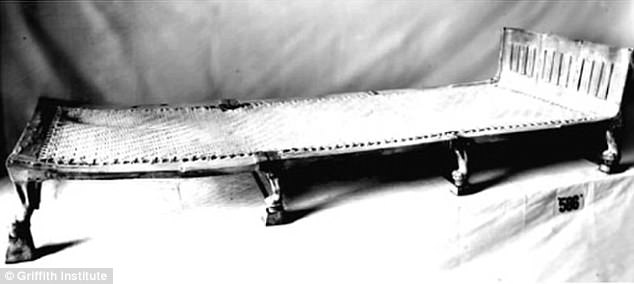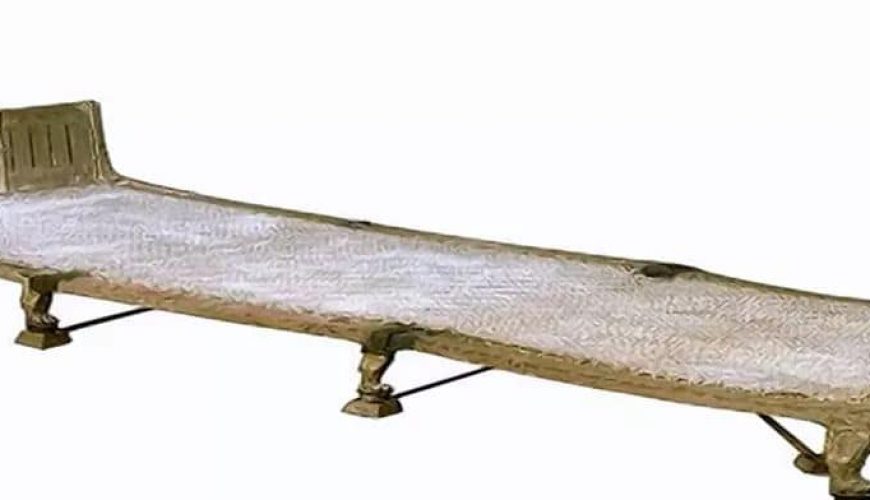Imagine discovering a piece of furniture so advanced that it could easily fit into modern living spaces, yet it was crafted over 3,300 years ago. Among the treasures unearthed in the tomb of King Tutankhamun, the folding bed stands out as a marvel of practicality and design. This innovative artifact reveals not only the technical brilliance of ancient Egyptian artisans but also provides insights into the young pharaoh’s life and the cultural values of his era.
Design and Craftsmanship: Ancient Technology at Its Best
The folding bed, recovered from Tutankhamun’s burial chamber, is a testament to the ingenuity of ancient Egyptian craftsmanship. Constructed from lightweight yet durable materials, such as acacia or ebony wood, it featured a collapsible frame connected by bronze hinges. This advanced design allowed the bed to be easily folded and transported—ideal for a pharaoh who may have traveled extensively during his life or for symbolic use in his journey to the afterlife.

The sleeping surface was made of interwoven linen cords, creating a flexible yet supportive platform. The bed’s V-shaped legs and smooth, clean lines reflected the aesthetic preferences of the New Kingdom era, where form and function were seamlessly integrated. Every aspect of the bed’s construction demonstrates the Egyptians’ remarkable ability to create practical and visually pleasing objects.
Purpose and Symbolism: More Than Meets the Eye
The folding bed was not just a practical piece of furniture; it was deeply symbolic. In ancient Egyptian beliefs, the afterlife mirrored earthly life, and providing the pharaoh with items for comfort and convenience was essential. The bed’s portability may also have represented readiness for the spiritual journey that awaited Tutankhamun.

As an artifact, it embodies the dual role of functionality and luxury. The inclusion of such a utilitarian object in Tutankhamun’s tomb emphasizes the Egyptians’ dedication to preparing their rulers for eternal life, equipping them with items that reflected their royal status and everyday needs.
Royal Life and the Significance of Mobility
This artifact also offers a rare glimpse into the life of an 18th Dynasty pharaoh. While King Tutankhamun’s reign was relatively short, the bed suggests the importance of mobility in royal life. Pharaohs often traveled for military campaigns, religious ceremonies, or diplomatic purposes. A folding bed would have been a practical addition to a portable royal household.

Its inclusion in the tomb also speaks to its perceived importance; it was meant to ensure that Tutankhamun remained comfortable in both the physical and spiritual realms. The bed is a reminder of the sophistication of the Egyptian court and their ability to balance utilitarian needs with luxury and refinement.
Legacy: A Masterpiece of Design
Today, King Tutankhamun’s folding bed is celebrated as a rare example of ancient engineering and design. Unlike many burial artifacts created solely for ceremonial purposes, this bed was built for practical use. Its innovative construction and timeless design continue to captivate modern audiences, serving as a bridge between the ancient and the contemporary.
The bed stands as a testament to the creativity and craftsmanship of ancient Egyptian civilization. It highlights their advanced understanding of engineering principles and their ability to craft objects that were not only functional but also beautiful. More importantly, it preserves the enduring legacy of a culture that mastered the art of merging practicality with spiritual significance.
A Timeless Artifact
King Tutankhamun’s folding bed is more than just a piece of furniture; it is a window into a world that valued innovation, beauty, and preparation for the afterlife. Its timeless appeal reminds us of the remarkable achievements of ancient Egypt and their ability to create artifacts that resonate across millennia. Today, it serves as a symbol of their ingenuity and the enduring mysteries of their civilization, proving that some ideas truly stand the test of time.

